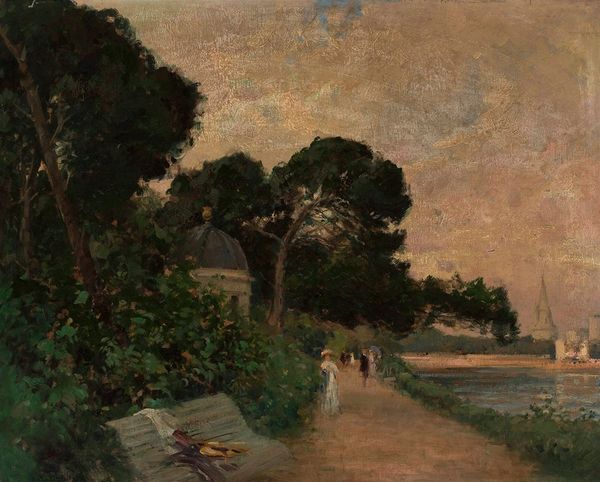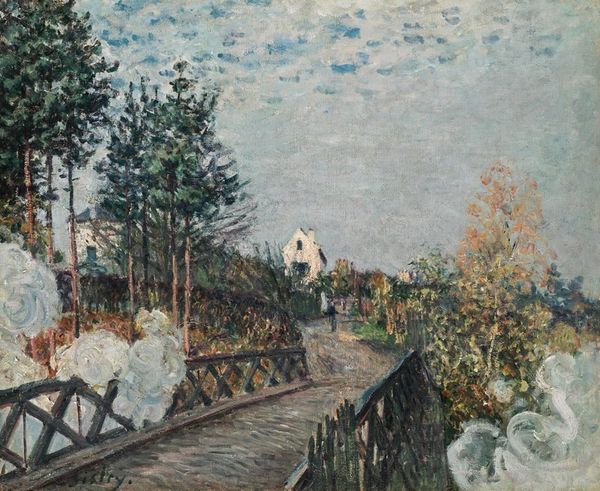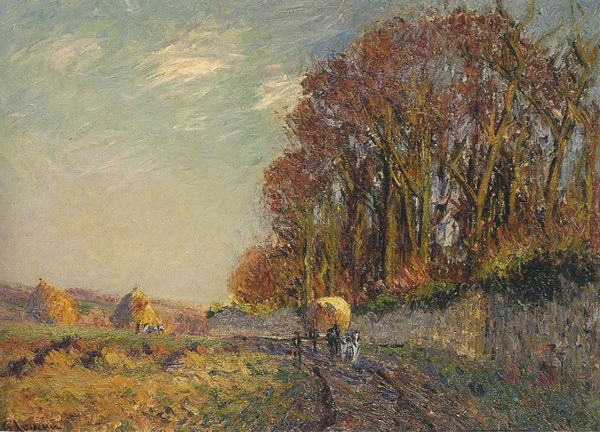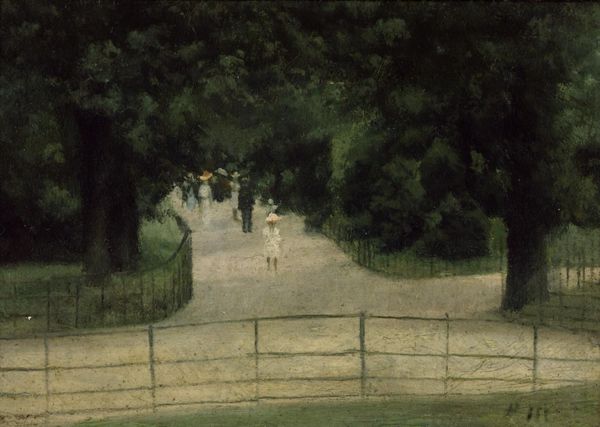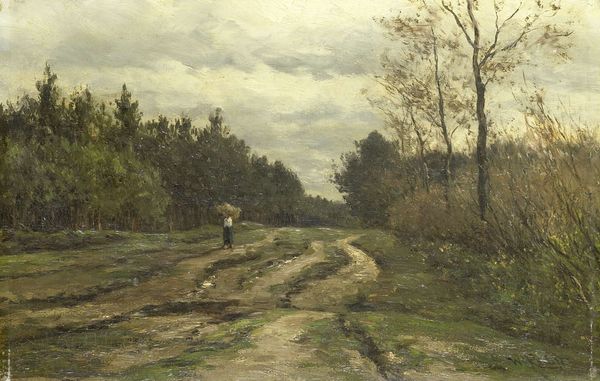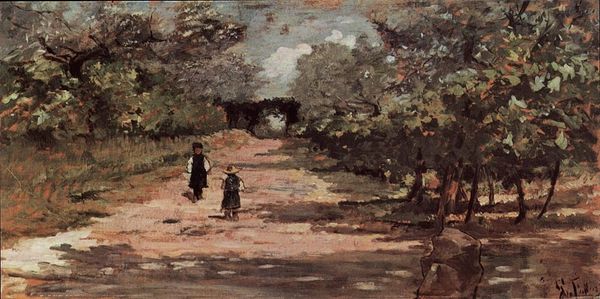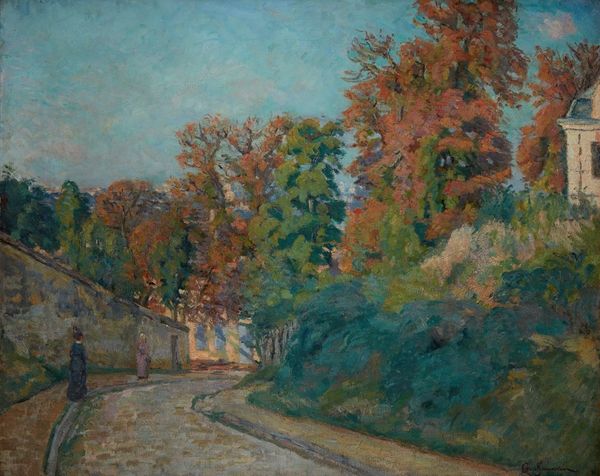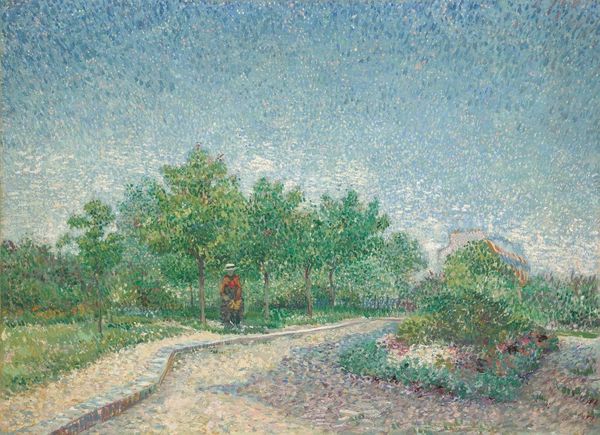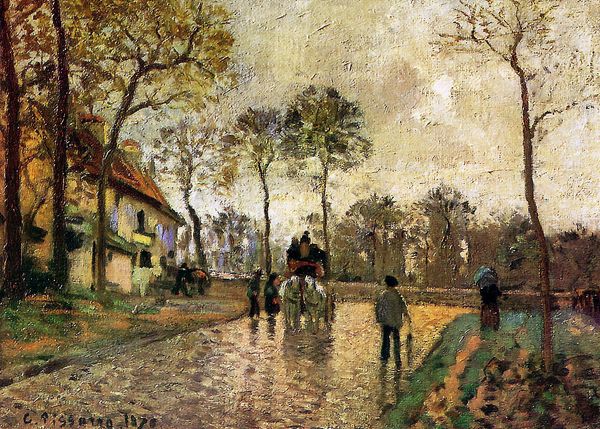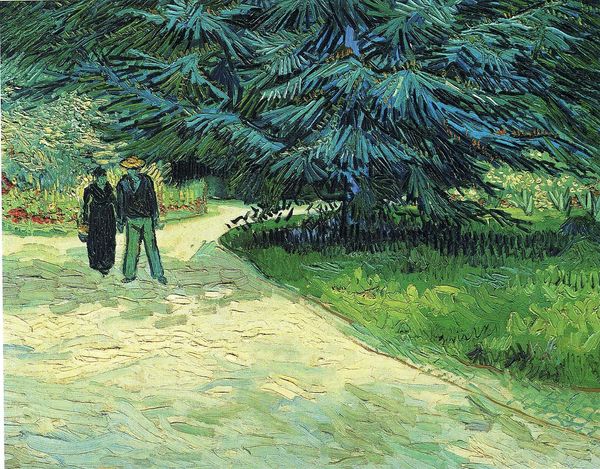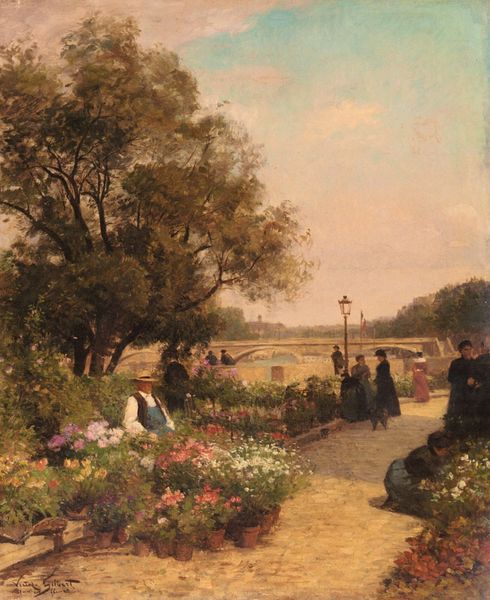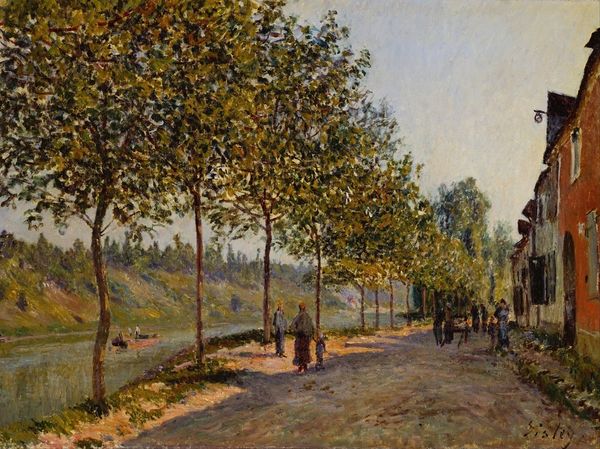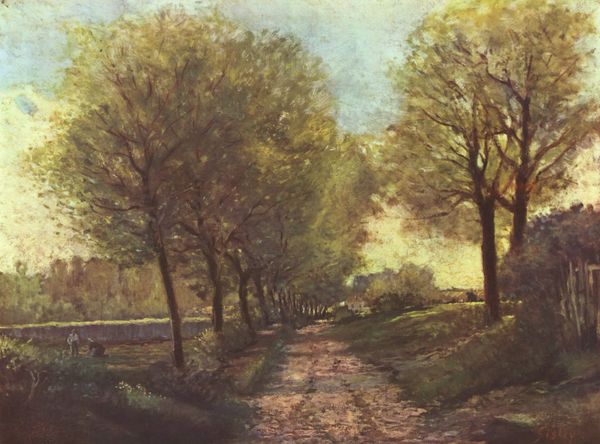
painting, plein-air, oil-paint, impasto
#
tree
#
painting
#
impressionism
#
plein-air
#
oil-paint
#
landscape
#
figuration
#
oil painting
#
impasto
#
cityscape
#
post-impressionism
#
street
#
realism
Copyright: Public domain
Curator: Look at this painting by Vincent van Gogh, "Sloping Path in Montmartre," created in 1886, now at the Van Gogh Museum. The scene depicts a climb into the Parisian district, doesn't it? Editor: Yes, immediately striking is this sense of an upward journey rendered with heavy, almost somber greens and browns, punctuated by the figures. The palette feels weighted, especially given the impressionist style. Curator: Indeed. This period marks a crucial juncture for Van Gogh. Moving to Paris exposed him to Impressionism and Post-Impressionism. Crucially, consider Montmartre itself, becoming this hub for avant-garde artists. It’s not just a physical place but also this vibrant site of cultural change and bohemian ideals. How does that resonate within the composition for you? Editor: Absolutely, that makes sense. One sees a population stratified—we glimpse these figures laboring upwards or dressed in what looks like humble religious garb. We observe people traversing urban stratification. Van Gogh, himself somewhat of an outsider figure, might’ve identified with the lives and marginalization reflected here, particularly since the Catholic figures were historically pushed from society for their beliefs.. Curator: Precisely. This painting diverges, I believe, from the purely aesthetic experiments of other Impressionists. His heavy application of oil-paint, almost creating texture, emphasizes the materiality and perhaps a tactile sense of the effort inherent to these people living in Montmartre. Think about what it would mean to ascend those hills regularly as the artist paints en plein air... Editor: His choice moves away from purely representational to communicate something beyond just optics or perspective. This contrasts, say, to Monet, because you can understand the subject he picks and empathize with them on multiple levels. The perspective, while not distorted, still forces the eye upwards, emphasizing struggle. It moves art to advocacy through showing daily living with great emotion. Curator: Definitely, seeing this reminds us of his evolving sensitivity to representing modern life's many dimensions. It seems through color and brushstroke and even the subject chosen Van Gogh creates space for societal consideration. Editor: So the artwork pushes past surface-level observations, forcing an interrogation of lives during immense cultural changes... it holds many intersectional interpretations regarding marginalization.
Comments
No comments
Be the first to comment and join the conversation on the ultimate creative platform.
